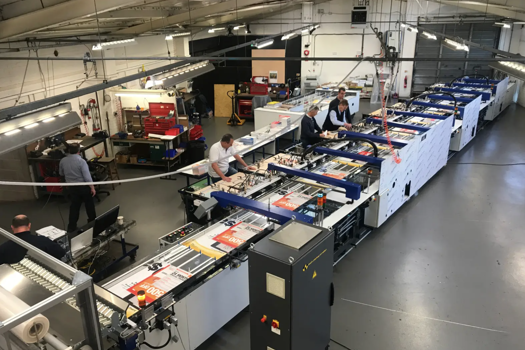In the latest Printweek poll, over a third (35%) of printers said that more than 70% of turnover came from their top five clients.
A further 15% of printers reported that their top five clients make up 50-70% of their turnover, meaning half (50%) of printers surveyed had at least half their sales coming from their top five clients.
Brendan Perring, general manager of the IPIA, said the numbers aligned with the association’s own experiences of the industry.
“It’s not uncommon, especially today, for printers to rely on a small group of very large clients, and I’d say the survey is pretty accurate,” he told Printweek.
“I don’t think it’s ever done through choice – any print business owner I’ve spoken to would much rather be in a situation where no one client is responsible for more than around 10% of their annual turnover.”
Ian Carrotte, owner of credit intelligence firm ICSM, warned of the dangers of such an arrangement.
“Clearly if you rely on just one or two major clients and they begin to delay payment with the usual excuses, you will be vulnerable if they were to go bust,” he told Printweek.
“The key is to always to stick to your credit terms of 30 days – or whatever your terms are. You will have more respect if you do from clients who know you won't be fobbed off.
“It's tricky as you don't want to lose a customer but it is better to lose one large client than have a massive bad debt.”
Perring added that the arrangement had become particularly common since Covid, as pressures from increasing overheads force printers to take on large jobs that might ultimately make them vulnerable.
“All the risk is placed on the printer: they’re the ones having to buy the paper, the media, the stock and everything else to fulfil the job before they get paid.”
“It’s a tricky situation,” Matt Seaford, sales director at Midland Regional Printers, told Printweek.
He explained that many print buyers would “try out” printers for a limited order before passing over larger contracts, and so puts printers at risk of losing out on future contracts should they decline these major orders.
“If you start declining work, it can put doubt in customers’ minds. I think the trick is to always be approaching more clients. If you’ve always got a few more [clients] coming in and you’re always talking to new people, then there’s always somebody up and coming.
“If a customer gets wind that you can’t handle all their work, they’ll start thinking: ‘They can’t handle it, let’s move 10% [of the work elsewhere.] But I don’t believe it ever is just 10%. From my experience, when I’ve met new customers looking to give you spillover work, a couple of years later, you get the lion’s share. So we invest a lot, and always try to keep some capacity for new clients.”
Printers can likewise minimise risks by monitoring their exposure to big customers, by strict management of payment terms as Carrotte suggested, or even through more imaginative means of pushing clients towards timely payments.
Carrotte explained: “One of our members had a printing business on an industrial trading estate in Devon.
“He was always having trouble with late payers and bad debts. A property on the high street came up – an old large shop – and he moved his presses there, put in a smart reception area with a large photocopier and had new graphics on the window which gave it the feel of an instant print shop.
“He said that strangely it had an effect on old and new customers with people happy to pay on collection, or even when they ordered print. He lost some of his older slower payers, but gained more smaller customers which helped cash flow.”










